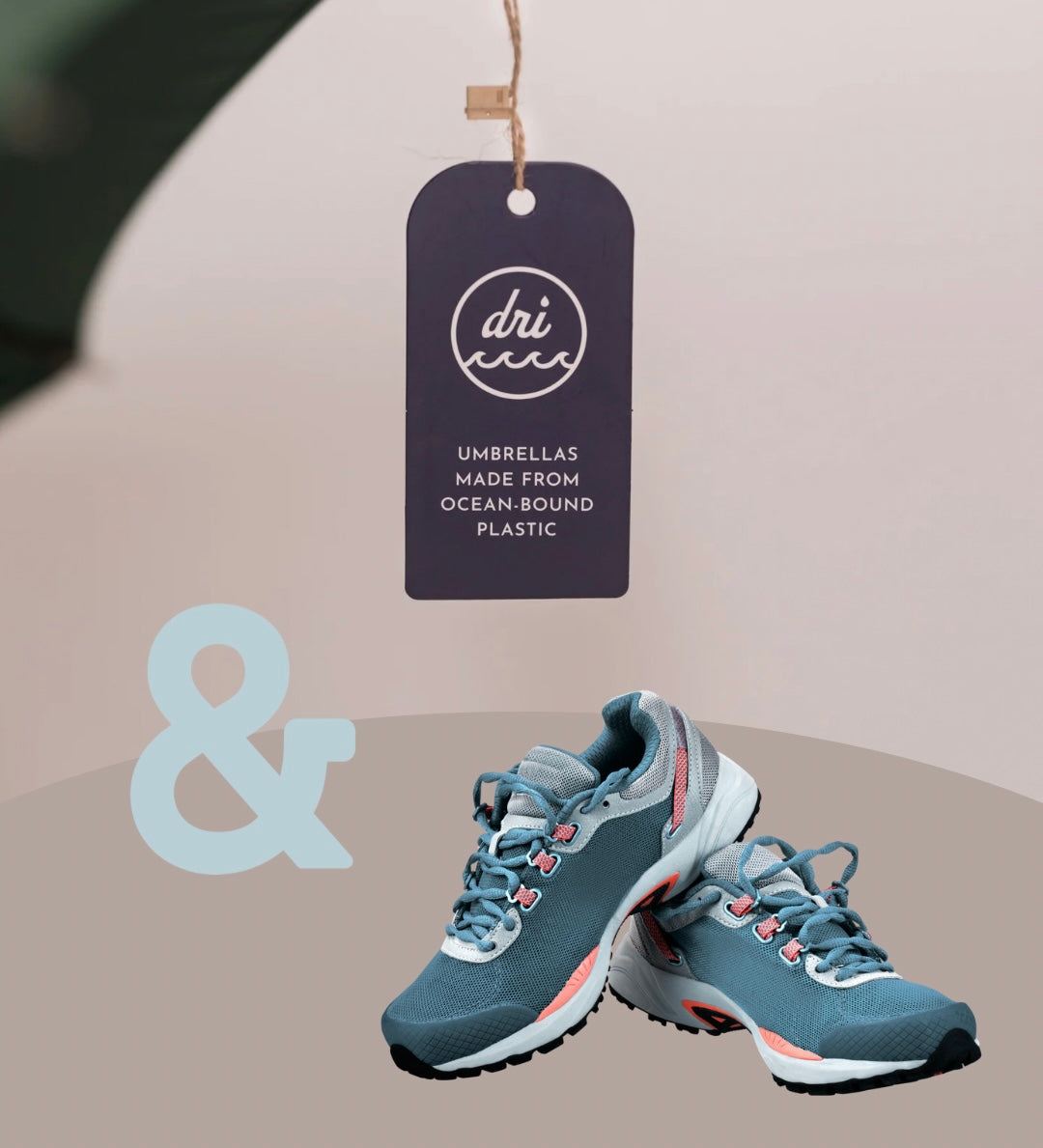
Sneakers4Good & Dri Umbrellas - Plastic Ocean Pollution and the Unexpected Link to Your Sneakers
Share
Written by: Kristy Morris, Chief Marketing Officer, Funds2Orgs
Have you ever strolled along a beach, particularly after a storm, and spotted sneakers or flip-flops washed ashore? If you did, the chances are you thought, how did that get here? Unfortunately, plastic ocean pollution isn't a challenge that's far off in the future. It's a challenge here now, and plastic pollution affects our waters, marine life, and the climate.
The reality is that plastic ocean pollution is seriously harming marine ecosystems. Every year, marine animals die as a result of getting entangled or ingesting on plastics or parts of items such as sneakers. It’s a reason why leading social enterprises are focused on sneaker reuse, which helps extend the life of quality sneakers.
You may wonder how manufactured items end up in the ocean. Unfortunately, they get there for reasons that include improper disposal, illegal dumping, and poor waste infrastructure. Research reported by PBS shows us the entire lifecycle and the impact of plastic pollution. Aside from harming waters and marine life, it increases greenhouse gases and drives climate change.
Why Are Sneakers Part of Ocean Plastic Pollution?
We must start with the basics to understand how plastic ocean pollution includes things such as sneakers and other manufactured items, including umbrellas. Regarding sneakers, most are made from materials derived from plastics. These include things such as mesh, plastic midsoles, or synthetic leather. Unfortunately, many sneakers aren't biodegradable.
When sneakers are tossed in the trash, they end up in landfills. In some countries and locations, municipal waste infrastructure is not robust. In turn, as manufactured items start to break down—particularly if they're near water sources—it's easy for them to simply float away. Once they go through rivers and reach the ocean, it's almost impossible to remove them.
One of the greatest tragedies is that 300 million sneakers and shoes end up in landfills. When you consider that some municipalities don't have robust infrastructure, it's easy to see how this is polluting soil and the planet's waters. There is a choice and a better path to transform our future, and it begins with small habits.
A Different Path: From Trash to Eco-Friendly Transformation
Often, convenience tops being eco-friendly. Think about the mountains of clothing manufactured as a result of fast fashion. You can also think of items such as disposable packaging and single-use plastics. These items also significantly contribute to waste and ocean plastic pollution. Still, each of us holds the power to choose a different path.
If you're concerned about climate change and the adverse effects of plastic pollution, know that you have power. You can begin by embracing the idea of reducing waste first and foremost. When you have waste, consider reuse first before you recycle. Reuse extends the life of an item and conserves resources. Recycling manufactures something new using more resources.
You can educate others about innovative approaches to items you no longer want. As a consumer, you can choose products with minimal packaging, practice thrifting, and go for vintage. Also, you can decide to support eco-friendly companies in terms of their practices and products.
What Else Can You Do to be Eco-Friendly?
There are other practical things you can do in the efforts to fight ocean plastic pollution and waste in general. The following are just a fraction of the things you can do to be more eco-friendly.
- Shopping bags. Bring only reusable shopping bags and avoid plastic bags.
- Single-use plastics. Stop using plastic straws and buying products with excess packaging.
- Eco-friendly brands. Shop brands that are eco-friendly, including umbrellas.
- Clothes dryer. Air dry clothing instead of using the clothing dryer.
- Local farmers. Support local food providers and farmers markets.
- Repair. Instead of buying new, repair first.
- Buy bulk. Buy bulk to reduce packaging waste.
- Volunteer. Do a local beach cleanup.
- Responsibly dispose of sneakers. Practice sneaker reuse with old athletic shoes.
- Fast fashion. Opt for clothing made of 100% organic materials instead of buying fast fashion.
It’s Not Just about Ocean Plastic
Plastic ocean pollution is a tragic and visible symptom of a deeper challenge. We have a collective waste problem where convenience usurps eco-friendly consumption. The ocean is vast and beautiful, but it can't be the planet's garbage can—even by accident. When we discard our waste, we have to reflect on how we do it and do it responsibly.
What we do every day when we toss our waste has a massive impact on a planet with 8.2 billion people. We have the tools and the knowledge to fight plastic ocean pollution and climate change. All we need is the will and momentum to get more people involved. Transformation is possible, and it begins with each of us and our actions.
-------------------------------------------------------------------------
About the Author: Kristy Morris is a creative professional in digital marketing strategy and development. Funds2Orgs is a leading shoe drive fundraising social enterprise focused on sustainable solutions for local and global impact.
